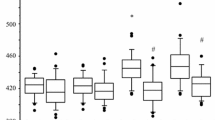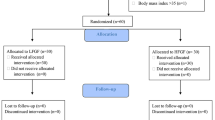Abstract
In this study, we chose sevoflurane as the volatile anesthetic for rapid inhalation induction (RII) and investigated its usefulness. We also assessed how RII with sevoflurane affected epidural pressure, and compared RII with rapid intravenous induction by thiopental on epidural pressure. The results were as follows: RII with 5% sevoflurane had a shorter induction time compared with published results on RII with other volatile anesthetics like halothane and isoflurane, and was accompanied by fewer complications. When RII with sevoflurane was attempted, epidural pressure increased significantly upon exhalation to residual volume just before induction and during laryngoscopy and endotracheal intubation compared with the preinduction value. There was induction methods during laryngoscopy and endotracheal intubation. Epidural pressure measurements are reportedly useful in monitoring intracranial pressure. Consequently, in patients with increased intracranial pressure, exhaling to residual volume and increasing arterial blood pressure during laryngoscopy and endotracheal intubation should be avoided. The results of this study suggest that RII with 5% sevoflurane in itself is safe and useful, and that it is unlikely to increase intracranial pressure as compared with rapid intravenous induction by thiopental.
Similar content being viewed by others
References
Ruffle JM, Snider MT, Rosenberger JL, Latta WB (1985) Rapid induction of halothane anaesthesia in man. Br J Anaesth 57:607–611
Wilton NCT, Thomas VL (1986) Single breath induction of anaesthesia, using a vital capacity breath of halothane, nitrous oxide and oxygen. Anaesthesia 41:472–476
Loper K, Reitan J, Bennett H, Benthuysen J, Snook L (1987) Comparison of halothane and isoflurane for rapid anesthetic induction. Anesth Analg 66:766–768
Ruffle JM, Snider MT (1987) Comparison of rapid and conventional inhalation inductions of halothane oxygen anesthesia in healthy men and women. Anesthesiology 67:584–587
Lamberty JM, Wilson IH (1987) Single breath induction of anaesthesia with isoflurane. Br J Anaesth 59:1214–1218
Yurino M, Kimura H (1992) Vital capacity breath technique for rapid anaesthetic induction: comparison of sevoflurane and isoflurane. Anaesthesia 47:946–949
Yurino M, Kimura H (1993) Induction of anesthesia with sevoflurane, nitrous oxide, and oxygen: A comparison of spontaneous ventilation and vital capacity rapid inhalation induction (VCRII) techniques. Anesth Analg 76:598–601
Drummond GB (1988) Rapid inhalation induction of anaesthesia. Br J Anaesth 61:373–375
Takahashi H, Toyozawa K, Yura M, Ikeda K (1987) Effect of sevoflurane on intracranial pressure in dogs (in Japanese with English abstract). Masui (Jpn J Anesthesiol) 36:862–865
Scheller MS, Tateishi A, Drummond JC, Zornow MH (1988) The effects of sevoflurane on cerebral blood flow, cerebral metabolic rate for oxygen, intracranial pressure, and the electroencephalogram are similar to those of isoflurane in the rabbit. Anesthesiology 68:548–551
Sugioka S (1992) Effects of sevoflurane on intracranial pressure and formation and absorption of cerebrospinal fluid in cats (in Japanese with English abstract). Masui (Jpn J Anesthesiol) 41:1434–1442
Asano M, Kosaka Y (1986) Changes of epidural pressure and cerebrospinal fluid pressure during abdominal surgery (in Japanese with English abstract). Masui (Jpn J Anesthesiol) 35:1694–1700
Asano M, Oh-oka T, Kosaka Y (1987) Relation between epidural pressure and cerebrospinal fluid pressure in dogs (in Japanese with English abstract). Masui (Jpn J Anesthesiol) 36:89–93
Fujioka S, Kaku M, Hamada J, Yokota A, Ushio Y (1989) The usefulness of lumbar epidural pressure as an index of intracranial pressure (in Japanese with English abstract). Neurol Med Chir 29:484–489
Marshall LF, Bruce DA, Bruno L, Schut L (1977) Role of intracranial pressure monitoring and barbiturate therapy in malignant intracranial hypertension. J Neurosurg 47:481–484
Author information
Authors and Affiliations
About this article
Cite this article
Wajima, Z., Kobayashi, N., Kadotani, H. et al. Effects of rapid inhalation induction with sevoflurane-oxygen anesthesia on epidural pressure in humans. J Anesth 9, 6–10 (1995). https://doi.org/10.1007/BF02482026
Received:
Accepted:
Issue Date:
DOI: https://doi.org/10.1007/BF02482026




